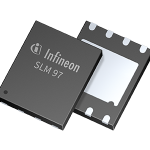In no context is the term COO (cost of ownership) more relevant than in the world of coding, where the price tag of a machine has very little bearing on its overall lifetime cost. This is why, when carrying out price comparisons of different coding systems and technologies, it is vital to take into account the ongoing costs of consumables, printheads, cartridges, servicing, maintenance and waste disposal, in order to get a full and accurate picture.
If this sounds like a daunting prospect, it doesn’t have to be. This guide is designed to help would-be buyers to calculate the cost per print for different coding technologies and draw meaningful comparisons that will inform a purchase decision.
Thermal Transfer
Ribbon cost
Infographic showing an 8 month payback of 3 thermal inkjet systems v leased CIJ systems
The obvious starting point when calculating the cost per print for a TT (Thermal Transfer) printer is with the cost of the ribbon. To do this, you need to take the cost per roll and divide this by the number of prints per roll.
If you don’t know how many prints you get from a roll, you can work this out from the length of the roll. Let’s assume the roll length is 450m and that you are printing at a format size of 12mm (adding a gap of 1mm minimum to the format size to account for the gap per index). You can then calculate your number of prints per roll by dividing the roll length by the format size.
In this case:
450,000 divided by 12mm = 37,500 prints per roll.
Taking your cost per roll as £10, you then divide £10 by 37,500.
This gives you a consumable or ribbon cost per 1000 prints of £0.26.
Printhead costs
Often, ribbon is the only variable suppliers of this technology will factor in when calculating cost per print. However, it is important to include the cost of the printhead in the equation.
The average distance that a printhead will cover/print over its lifetime is 30km (30,000m). Still working on the basis of a 450m roll, for every 66 rolls printed, you will need to replace the printhead (30,000 divided by 450).
This means that every 66 rolls, you will need to buy a new printhead (average cost £450). This adds an additional £6.81 onto your £10 cost per roll.
Taking your revised cost per roll as £16.81, you then divide £16.81 by 37,500.
This gives you a cost per 1000 prints of £0.44.
With TIJ, the only ongoing cost is the purchase of the cartridge; it is a completely maintenance- and service-free technology
Servicing costs
Incorporating a number of moving parts and general wear parts that need to be checked and replaced regularly, TT printers require servicing. This cost needs to be taken into account and can be calculated in much the same way as the printhead and ribbon costs.
Let’s assume a printer needs two services annually at a cost of £750 each, so £1500 in total.
You need to work out the number of prints per year (calculate from the number of rolls or printheads used per year).
Say your machine codes 500 packs per day, five days a week, 52 weeks a year, this comes out at 130,000 prints per year. You need to divide 1500 by 130,000, to give you an additional £0.01 cost per print. This gives you an additional cost per 1000 prints of £0.11.
Therefore, your revised cost per 1000 prints, taking into account servicing, is £0.55.
Disposal costs
Lastly, there is the cost of disposal for used thermal ribbon and plastic and cardboard cores. These costs can be calculated in the same way as above and added to the cost per 1000 prints.
Continuous Ink Jet
TIJ will emerge as the lowest cost option over its lifetime, when measured in terms of cost per 1000 prints
Consumables costs
Any cost per print calculation for a Continuous Ink Jet (CIJ) printer will usually start with consumables: bottles of ink and makeup. The cost of these can be divided by the number of characters per bottle to arrive at a consumables cost per 1000 prints.
Ink prices vary quite a bit, depending on the grade of the ink, but for the purposes of this article, let’s assume that ink is £55 per 600ml bottle and makeup solution is £12 per bottle. On average, one bottle of ink usually requires around four bottles of makeup solution.
When printing a six-character code as a normal matrix image (each individual character printed within a 5 x 7mm box area), you would get 46 million individual characters per bottle of ink. Cost per 1000 prints therefore works out at £0.001 (divide £55 by 46 million and multiply the answer by 1000). Add to this the cost of the makeup solution (£48) and the cost per 1000 prints goes up to £0.25.
Servicing costs
As with TT, with CIJ, there is also a requirement for servicing that needs to be factored in. Average annual servicing cost for a CIJ printer is around £850 per year (one service). The printer may also need additional parts, for example, pumps and filters, which may take this figure up to somewhere in the region of £1500 for the year. The amount that this will add to your cost per 100 prints can be calculated in the same way as for TT.
Disposal costs
Hazardous makeup chemicals and waste ink need to be disposed of safely, resulting in another variable cost that needs to be factored in. This task must be carried out by a specialist waste management company, with annual costs ranging from about £1500 up to £7500 for high volume ink users.
Thermal Ink Jet
Cartridge costs
Thermal Ink Jet (TIJ) is the most straightforward technology to calculate the cost of, because the only ongoing cost is the purchase of the cartridge; it is a completely maintenance- and service-free technology. Replacing the print cartridge effectively replaces the entire print engine, eliminating the need for service contracts. A standard cartridge printing best before dates will perform as many as 500,000 prints before the cartridge needs changing – changeovers are required far less frequently than many people think.
Cost per print will vary quite a bit for TIJ, depending on the required print quality and the type of image being produced. A 2D code, for example, will use much more ink than a simple alphanumeric code.
Let’s assume a company pays £76.50 per cartridge and is getting 380,000 prints per cartridge when printing a lot code and expiry date at 250 dpi. Cost per 1000 prints will be £0.20 (divide 76.50 by 380,000 and multiply the answer by 1000).
On a more complex code, however, cost per 1000 prints will be higher. You might only get 70,000 prints per cartridge when producing a 2D code, serial number, lot number and expiry date at 300 dpi print quality. This will give a cost per 1000 prints of £1.09.
Do the math
When TIJ printers first came on the scene, they had a price tag in the region of £6,000, which was comparable to the cost of a CIJ printer, advances in technology and an increased range of systems mean customers have a much wider choice when deciding on the level of complexity / ability of the system(s) that they require, this is reflected in the pricing structure, a simple stand-alone TIJ printer installation can be as much as 1/3rd less than that of a CIJ printer, with many suppliers of CIJ technologies concentrating on the consumables revenue, it is not uncommon for the printer to be virtually given away knowing that it will be paid for indirectly in the form of ongoing consumable costs. Therefore, a meaningful price comparison can only really be drawn by looking at cost of ownership. In the majority of applications, TIJ will emerge as the lowest cost option over its lifetime, when measured in terms of cost per 1000 prints taking all of the above into account.








